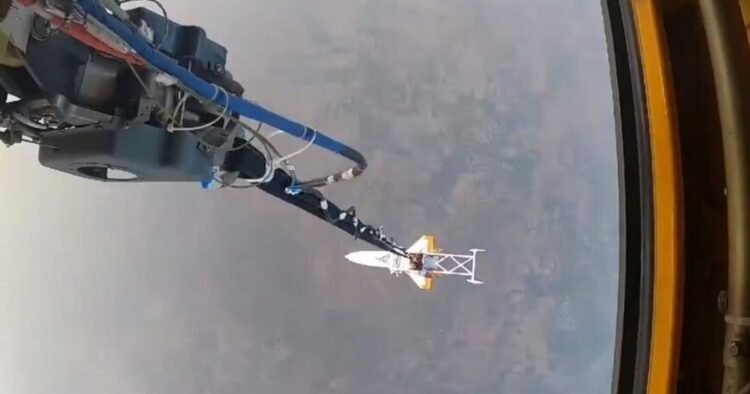The Indian Space Research Organisation (ISRO) has achieved a significant breakthrough in its reusable launch vehicle (RLV) program. In a milestone moment, ISRO demonstrated the autonomous landing capability of its winged vehicle named Pushpak, as part of the RLV-LEX 2 mission. Pushpak is designed to drastically reduce the costs associated with space launches.
During a crucial test, Pushpak underwent a series of maneuvers with the assistance of the Indian Air Force’s Chinook helicopter. The RLV was lifted by the Chinook helicopter to a predefined altitude of 4.5 kilometers before initiating the autonomous landing sequence.
After being released at a distance of 4 kilometers from the runway, Pushpak autonomously approached the runway, making necessary cross-range corrections. It successfully landed precisely on the runway and came to a halt using its brake parachute, landing gear brakes, and nose wheel steering system, as reported by ISRO.
ISRO stated, “With this second mission, ISRO has re-validated the indigenously developed technologies in the areas of navigation, control systems, landing gear, and deceleration systems essential for performing a high-speed autonomous landing of a space-returning vehicle.”
Utilising the #IAF Chinook helicopter for its airlift and subsequent positioning at a predefined altitude and location, @isro successfully demonstrated the autonomous landing capability of the Reusable Launch Vehicle (RLV) 'PUSHPAK' as part of its RLV-LEX 2 mission.
Airlifted to… pic.twitter.com/FCTGHk51wO
— Indian Air Force (@IAF_MCC) March 22, 2024
The Indian Air Force (IAF) shared a video on social media showcasing the Chinook helicopter releasing the reusable launch vehicle from a predefined altitude and location. Another image shared by the IAF depicted the RLV with a parachute at its back after precisely landing on the runway.
The IAF expressed its congratulations to ISRO on achieving this significant milestone, affirming its commitment to contribute and collaborate in future endeavors.
This successful mission took place at the Aeronautical Test Range in Chitradurga, Karnataka, at 7:10 am local time. The mission was accomplished by the collaborative efforts of Vikram Sarabhai Space Centre (VSSC), Liquid Propulsion System Centre (LPSC), and ISRO Inertial Systems Unit (IISU).
ISRO chairman S Somanath commended the team for the flawless execution of this complex mission, marking a significant advancement in India’s space exploration capabilities.

















Comments